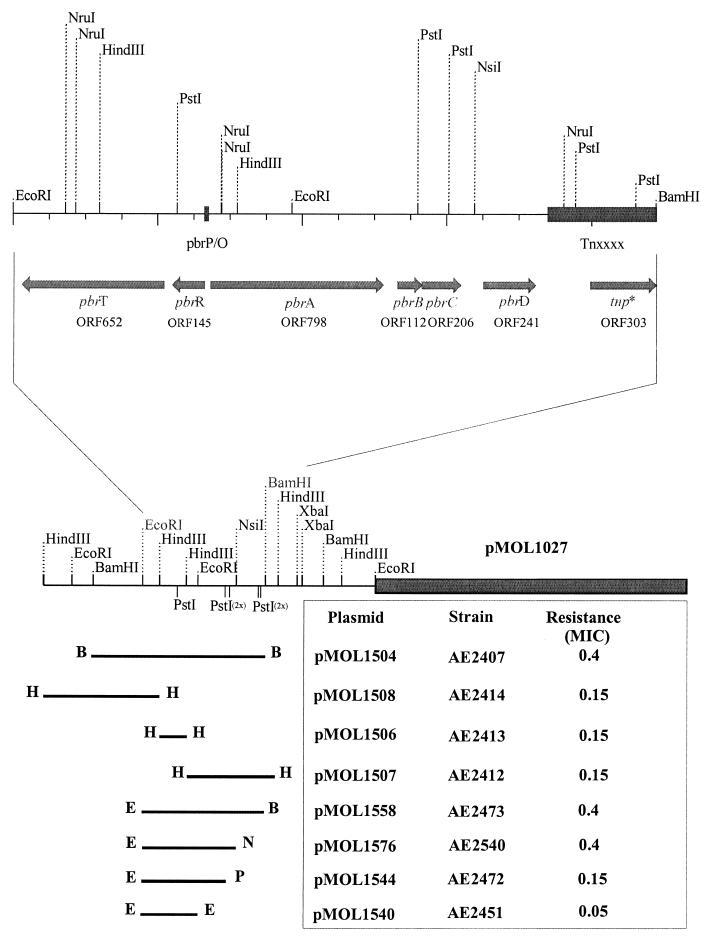FIG. 1.
Restriction map of pMOL1027 and identification of the minimal region required for Pb(II) resistance. The bars indicate the positions of the subcloned fragments and are flanked by the restriction sites used, as follows: BamHI (B), EcoRI (E), HindIII (H), NsiI (N), and PstI (P). On the right side of each bar, the plasmid and strain number for the corresponding subclone are indicated as well as the lead resistance phenotype, defined as MIC in millimolar Pb(NO3)2 compared with the MIC of 0.15 mM for the plasmid-free strain AE104. The physical map of the 8,890-bp EcoRI-EcoRI-BamHI fragment required for Pb(II) resistance is shown in more detail. The positions of the pbrT, pbrR, pbrA, pbrB, pbrC, and pbrD genes plus the sizes of their corresponding ORFs (in numbers of amino acids), the incomplete transposon (Tnxxxx, similar to Tn5271 [22]) flanking the pbr operon and its presumed transposase gene (tnp*), and the pbr-promoter-operator region (pbr P/O) as well as the important restriction sites used for subcloning are indicated.

